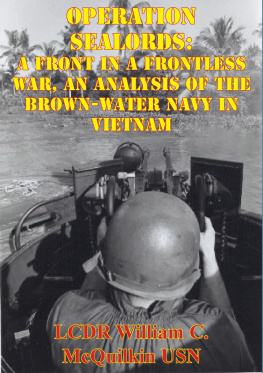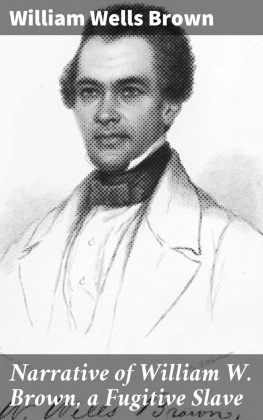This edition is published by PICKLE PARTNERS PUBLISHINGwww.picklepartnerspublishing.com
To join our mailing list for new titles or for issues with our books picklepublishing@gmail.com
Or on Facebook
Text originally published in 1997 under the same title.
Pickle Partners Publishing 2014, all rights reserved. No part of this publication may be reproduced, stored in a retrieval system or transmitted by any means, electrical, mechanical or otherwise without the written permission of the copyright holder.
Publishers Note
Although in most cases we have retained the Authors original spelling and grammar to authentically reproduce the work of the Author and the original intent of such material, some additional notes and clarifications have been added for the modern readers benefit.
We have also made every effort to include all maps and illustrations of the original edition the limitations of formatting do not allow of including larger maps, we will upload as many of these maps as possible.
OPERATION SEALORDS: A FRONT IN A FRONTLESS WAR, AN ANALYSIS OF THE BROWN-WATER NAVY IN VIETNAM
By
LCDR William C. McQuilkin, USN.
TABLE OF CONTENTS
Contents
ABSTRACT
This study examines Operation SEALORDS, the capstone campaign conducted by the brown-water Navy in Vietnam. Specifically, this paper addresses the primary question: Was the SEALORDS campaign successful, and if so, what lessons can be learned from SEALORDS and how might the Navy employ brown-water forces in the future?
This thesis breaks down the SEALORDS campaign into three areas of study. First, the study examines the barrier interdiction portion of the campaign designed to stem the flow of enemy infiltration of men and material from Cambodia into the Mekong Delta. Second, this study analyzes the Denial of Sanctuary Operations and Pacification portion of the SEALORDS operations. Last, the Accelerated Turnover to the Vietnamese Program (ACTOV) is examined to determine its effectiveness.
The findings of this study suggest that by concentrating naval forces athwart the major infiltration routes along the Cambodian border, SEALORDS effectively cut enemy lines of communication into South Vietnam and severely restricted enemy attempts at infiltration. Additionally, the findings suggest that SEALORDS contributed significantly to pacification efforts in the southern part of III Corps and all of the IV Corps Tactical Zone. Finally, the ACTOV Program is evaluated as successful and put the Navy out ahead of the other services with respect to Vietnamization of the war effort.
LIST OF ABBREVIATIONS
ACTOVAccelerated Turnover to the Vietnamese
AMMI PONTOONMulti-purpose barge, 28 feet by 90 feet
AOArea of Operations
APCArmored Personnel Carrier
ARVNArmy of the Republic of Vietnam
ATSBAdvanced Tactical Support Base
ATCArmored Troop Carrier
CIACentral Intelligence Agency
CIDGCivilian Irregular Defense Groups
CNOChief of Naval Operations
COMNAVFORVCommander Naval Forces Vietnam
COMUSMACVCommander U.S. Military Assistance Command Vietnam
CTFCommander Task Force
CTGCommander Task Group
CTZCorps Tactical Zone
ENIFFEnemy Initiated Firefight
FRIFFFriendly Initiated Firefight
GVNGovernment of Vietnam
HALHelicopter Attack Light Squadron
HESHamlet Evaluation System
KIAKilled in Action
LSDLanding Ship, Dock
LSTLanding Ship, Tank
MRFMobile Riverine Force
NAVFORVNaval Forces Vietnam
NVANorth Vietnamese Army
OPLANOperation Plan
PBRPatrol Boat, River
PCFPatrol Craft, Fast (Swift Boat)
PFPopular (Provisional) Force
RACRiver Assault Craft
RAGRiver Assault Group (VNN)
RAIDRiverine Assault Interdiction Division (VNN)
RFRegional Force
RIVDIVRiverine Division (USN)
RSSZRung Sat Special Zone
SEALUSN Special Forces
SEALORDSSoutheast Asia Lake. Ocean, River, and Delta Strategy
SEAWOLFUH-IB Helo, heavily armed, USN operated
TFTask Force
USNUnited States Navy
VCVietcong
VNMCVietnamese Marine Corps
VNNVietnamese Navy
WBGPWaterborne Guard Post
ZIPPOFlame thrower equipped ATC or Monitor
LIST OF ILLUSTRATIONS
1.The Mekong Delta
2.Enemy Infiltration Routes into the Mekong Delta
3.SEALORDS Operations
4.Sea Float/Breezy Cove
5.Ready Deck
CHAPTER I INTRODUCTION AND BACKGROUND
Introduction
During the Vietnam War the Mekong River Delta was a crucial battleground. Extending south and west from Saigon to the Gulf of Thailand and the Cambodian border, the delta is a rich rice producing area that was home to one-half of South Vietnams population. Control of this area was essential if the war against the Vietcong (the name for communists in South Vietnam, acronym VC) and the North Vietnamese was going to succeed.
Crisscrossed by rivers and canals, the delta was an area where people and goods moved primarily by water. To provide security against communist forces and interdict communist supply shipments, control of these waterways was necessary. It was this situation that led the United States to establish a riverine (brown-water) naval force in South Vietnam. As part of the American military assistance to the South Vietnamese government, the United States Navy (USN) undertook the mission of winning back and holding this strategic region.
This paper examines Operation SEALORDS, the capstone campaign conducted by the brown-water Navy in Vietnam. Operation SEALORDS (Southeast Asia Lake Ocean River Delta Strategy) began on 5 November 1968 and lasted until 1 July 1970. The broad mission of SEALORDS was to interdict enemy supply lines of communication and to conduct offensive operations with the intent to regain control and pacify designated areas in the southern part of III Corps and all of IV Corps Tactical Zone, an area that corresponded roughly to the delta. SEALORDS represented the maturation of riverine warfare in Vietnam. By this time, riverine forces had evolved from a rather ad hoc, hastily put together force in early 1965, into an integrated fighting force.
This paper is divided into five chapters. The first chapter provides an introduction and background. In order to correctly analyze SEALORDS, it is necessary to put the operation into some historical context. Chapter one examines some of the evolutionary changes in riverine warfare and addresses early measures taken to counter communist infiltration into what would become the SEALORDS area of operations (AOR). Chapter two examines the operational concept of SEALORDS as well as the Cambodian border interdiction campaign. This discussion shows what was different and significant about SEALORDS. Chapter three discusses various denial-of-sanctuary operations and pacification campaigns as they pertain to Operation SEALORDS. Chapter four examines the Accelerated Turnover Program to the Vietnamese (ACTOV), the U.S. Navys Vietnamization plan. ACTOV was instituted concurrently with SEALORDS. The final chapter provides an analysis and conclusions.
Primary and Subordinate Research Questions
This study assesses qualitatively the effectiveness of the SEALORDS campaign by analyzing critical components of the operation. Specifically, this paper addresses the primary question: Was the SEALORDS campaign successful, and if so, what lessons can be learned from SEALORDS and how might the Navy employ brown-water forces in the future? In order to provide an answer to this question, three subordinate questions are addressed.











